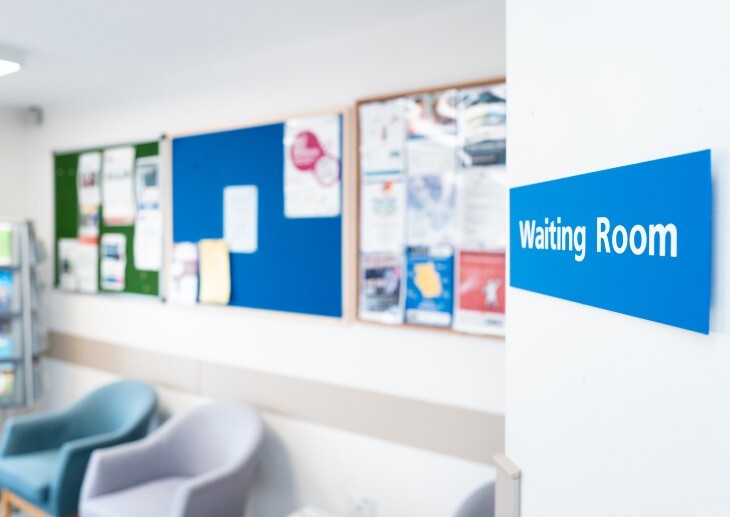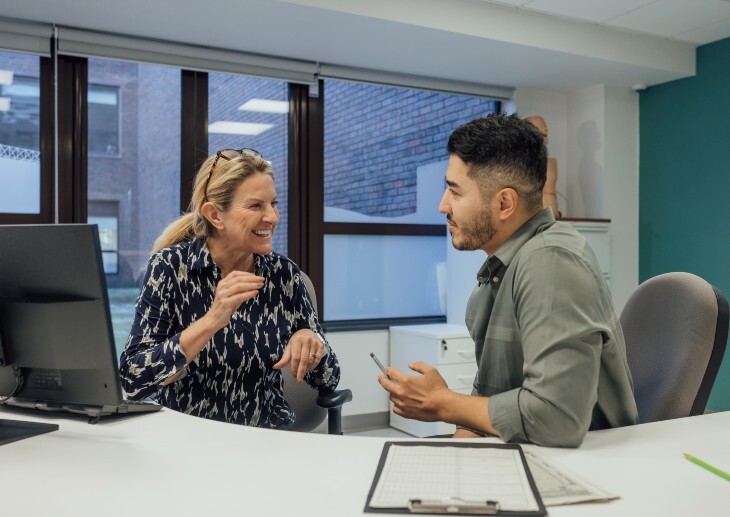Dr Sarah Heyes
Clinical Director of
Wanstead Polysystem
Northeast London
NHS Redbridge introduced GP commissioning a year ahead of the government's white paper on health with the creation of five area-based 'polysystems'.
Dr Sarah Heyes
Clinical Director of
Wanstead Polysystem
Northeast London
NHS Redbridge introduced GP commissioning a year ahead of the government's white paper on health with the creation of five area-based 'polysystems'.
Dr Sarah Heyes
Clinical Director of
Wanstead Polysystem
Northeast London
NHS Redbridge introduced GP commissioning a year ahead of the government's white paper on health with the creation of five area-based 'polysystems'.
The dermatology pilot has been one of the chief successes of our GP-led commissioning work. It offers a more cost-effective and cohesive service than its predecessor, as well as minimising secondary-care referrals and improving patient experience.
Skin complaints are a common condition facing GPs, and it seemed an appropriate area in which to flex our newfound commissioning muscles. The challenge was finding an alternative to the existing service, which, despite the best of intentions, offered slow referrals and an over-reliance on secondary care intervention.
GPs with a special interest (GPwSi) have to balance their specialism with their day-to-day duties, and there was a general consensus among Wanstead's 12 practices that a new approach was needed to meet patient demand.
Many GPs have long held the belief that they can design more effective care pathways than primary care trusts (PCTs), and this was our chance to put this belief – bolstered by the fact that GPs possess the clinical skills and grassroots knowledge of patients' needs that the PCT would be hard-pressed to match – into practice.
Our goal was simple. We wanted provide a cost-effective local service delivered by a level-three dermatologist.
The capacity to provide more services closer to home is one of the cornerstones of GP commissioning in Redbridge, offering patients the convenience of local treatment and commissioners a more streamlined and cost-effective solution.
We chose to employ independent provider ESS Primary Care Solutions Ltd for the three-month pilot, which treated 36 patients at six clinics between July and September 2010. The company provided an inclusive package, including a dermatologist, administrative support and a detailed cost, performance and patient satisfaction analysis.
A total of 36 patients were seen at the dermatology clinics at South Woodford Health Centre, which offered a central location within the polysystem. The service provider was responsible for providing all consumables associated with running the clinics, except, as agreed, use of the health centre's hyfrecator.
Any diagnostics required were sent to our local hospital, with costs met by the practice within the arrangements of direct access. A separate medicines management budget was established to monitor drug costs.
We often focus our efforts on clinical input without fully appreciating the role of good administration. It may be obvious advice, but 'pinch-points' where problems occur include misplaced files and 'did not attends' (DNAs) – these are both costly and deny other patients an appointment.
My initial advice to fledgling commissioning groups is to have a clear picture of what you want to achieve. Start with something small and manageable. After all, you can't hit a target if you don't know what you're aiming for. We had a strong vision of what we wanted, married to clear, evidence-based results.
The support of local practices is essential along with a solid evidence base of proven results. In Wanstead, all the practices backed the dermatology pilot, after which it was a case of 'test, consolidate and move forward'. This approach has proved successful in Wanstead and the pilot has now been rolled out across the rest of the polysystem, which has a population of 70,000.
It's also important to set parameters: we made it clear that patients could not expect referrals as a matter of course, and that the focus was on treatment in a primary care setting in all but the most serious cases.
This was achieved through a combination of written information, telephone calls and face-to-face communication. This was well received. Patients appreciated our commitment to finding a neighbourhood-based solution that made the whole process easier and more accessible.
[[SH_1]]
The original pilot had a clinical inclusion list of 12 conditions, including eczema, psoriasis, acne and rosacea, while exclusions included melanomas, squamous cell carcinoma and cosmetic surgery. Every patient was given an appointment within four weeks, with no referrals to secondary care, a low DNA rate (8%), minimal prescriptions (15 items totalling £81.76) and minor use of cryotherapy.
These successes were underpinned by two of the cornerstones on which clinical commissioning will stand or fall: value for money and patient satisfaction. The majority of patients said the service was good or excellent. (A patient satisfaction survey ran throughout the pilot, along with a clinical audit.)
The pilot was provided at 75% of the national tariff and 25% for the follow-up appointment. The first outpatient attend (FOA) cost £109, while the follow-up (FU) was £53. In comparison, the hospital tariff for an FOA was £187 and £99 for the FU.
Minor operations cost £150, compared with the hospital charge of around £500, while basal-cell carcinoma (BCC) excisions cost £350, compared with £500-£3,000.
The total cost of the pilot was £6,716 compared with the projected cost of £11,532 if the prior arrangement with the hospital had remained in place: a saving of more than 50%.
A further comparative cost-saving model that matched the pilot against previous costs for the period from November 2010 to April 2011 found a saving of £33,800 – providing evidence that the use of private healthcare doesn't always equate to higher charges.
Mentioning the words 'savings' in the same breath as the NHS is akin to an act of heresy in the media, but it's time we started challenging some archaic preconceptions. No clinician is in any doubt about the amount of money haemorrhaging through unnecessary duplication in the NHS, yet this fact also presents a unique opportunity to move forward.
There is enough money in the health system for everyone to receive the right treatment if there is a sea change in both professional and public attitudes. In Wanstead, we invite secondary care clinicians to meet local GPs on a regular basis and explain the issues they face and how we can work together to better manage patient loads and referrals.
We've found these information-sharing events useful and they serve to strengthen the link between primary and secondary physicians. Our GPs also get together to share best practice with one another, which strengthens our capacity to problem-solve on a local level.
First-time referrals are also a major focus for GP commissioners in Redbridge, where acute referrals have dropped by 4% in the first quarter of 2010/11. Likewise, the public has to realise that the NHS has finite resources and the use of services such as Accident and Emergency (A&E) should be sensible. In northeast London, we know a high volume of patients turning up at A&E would be better treated at urgent care and walk-in centres, yet many continue to use the service.
A local example was a young woman who had earache for several weeks and decided to visit A&E in the small hours of the morning after leaving a nightclub because it was convenient for her. In Wanstead, we have a record of everyone who goes to A&E and personally ring patients whose attendance is questionable. We highlight the alternatives and the fact that going to A&E costs £59 per patient irrespective of the treatment. Patients appreciate this personal touch, and are often shocked by the cost and the fact it means less money is spent on local healthcare.
Again and again, the commissioning process highlights the danger of making assumptions of what people do and do not know, and the problems this can cause. GPs spend much of their time working in the isolation of a consulting room, and we have to learn to share what we know with other providers and the public so that we move forward together.
This process of education and information sharing is being further strengthened in Redbridge by the use of a new data analysis and risk stratification tool running in the borough's surgeries. The Health Analytics software is capable of pooling and cross-referencing patient information from primary and secondary care records and creating a rich variety of solution-based algorithms.
Some of the findings have been a real wake-up call, including the fact that 1% of Redbridge's 240,000-strong population living with long-term conditions account for an annual medical bill of £36m, while 5% of all hospital admissions in the sector are the result of people taking the wrong dosage or type of medication.
GPs now have the decision-making power to address these and other problems. It's an exciting time to be working in the NHS and a great opportunity for positive change if we're bold enough to take it.





